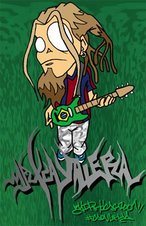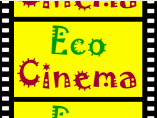
The wind blows keen across the ridge
Black against a charcoal grey
We climb up here by the winding path made so long ago
In the valley below the last few lights
glow just like the embers of a fire
We begin to remember, we begin to remember
We came by the sea and we took the land
We spread out across the plains
And on and on to the mountains
Until there was nothing left to conquer
The sound of chopping trees echoed through the woods
We built the ships and the houses
and the bridges and the fortifications
Until there was nothing left to build with
Now in the silver grey dome of the sky
The birds fly home for winter
And we all come down to the shore and stare across the waves
We've got to get off the island
We carved monuments to the angry gods
We hauled stone across the deserts of our own making
From the standing stones to the villages
To the shining palaces looking out over the water
The soil is growing thin, the yield running low
There's too many of us here, too many of us here
And now ragged ribbons of rain sweep in
As the birds fly home for winter
And we all come down to the shore and stare across the waves
We've got to get off the island.
Great lyrics describing the decline of a human society because of improvident and non sustainable exploitation of nature in an environment with restricted natural sources. Probably the song refers to one of the most famous of such historical events: The decline of civilization in Easter Island in the middle of Pacific Ocean.
We read in wikipedia:
The history of Easter Island is rich and controversial. Its inhabitants have endured famines, epidemics, civil war, slave raids and colonialism, and the crash of their ecosystem; their population has declined precipitously more than once.Also, Jared Diamonds wonders in his book “Collapse”: If some thousands of primitive Polynesians in Easter Island were enough to destroy their environment and finally their society only by using stone tools and their muscles, what about the modern humans of 6 billion with such an advanced technology? The parallelism is striking: An isolated island in the ocean, an isolated planet in space, no place to run, no place to seek for help when total crisis will strike. Easter Island is the best example of a society that has been self-destructed by extreme exploitation of its natural sources.
Easter Island, and analysis of previous radiocarbon dates imply that the island was colonized late, about 1200 CE. Significant ecological impacts and major cultural investments in monumental architecture and statuary thus began soon after initial settlement.”
"The overall picture for Easter is the most extreme example of forest destruction in the Pacific, and among the most extreme in the world: the whole forest gone, and all of its tree species extinct."
Trees are sparse on modern Easter Island, rarely forming small groves. The island once had a forest of palms, and it has generally been thought that native Easter Islanders deforested the island in the process of erecting their statues.
Jared Diamond gives an extensive look into the collapse of the ancient Easter Islanders in his book Collapse. The disappearance of the island's trees seems to coincide with a decline of its civilization around the 17th and 18th century. Midden contents show a sudden drop in quantities of fish and bird bones as the islanders lost the means to construct fishing vessels and the birds lost their nesting sites. Soil erosion due to lack of trees is apparent in some places. Sediment samples document that up to half of the native plants had become extinct and that the vegetation of the island was drastically altered. Chickens and rats became leading items of diet and there are contested hints that cannibalism occurred, based on human remains associated with cooking sites, especially in caves.
By the end of the third epoch in the island's history, with only one "long-ear" surviving, there were more than a thousand moai (stone statues), which was one for every ten islanders (Wright, 2004). When the Europeans arrived in the 18th century, the worst was over and they only found one or two living souls per statue.
Easter Island has suffered from heavy soil erosion in recent centuries, perhaps aggravated by agriculture and massive deforestation. This process seems to have been gradual and may have been aggravated by extensive sheep farming throughout most of the 20th century. Jakob Roggeveen reported that Easter Island was exceptionally fertile. "Fowls are the only animals they keep. They cultivate bananas, sugar cane, and above all sweet potatoes." In 1786 M. de La Pérouse visited Easter Island and his gardener declared that "three days' work a year" would be enough to support the population.
You can hear this song in youtube





1 comment:
Pretty effective piece of writing, thanks for the post.
Post a Comment